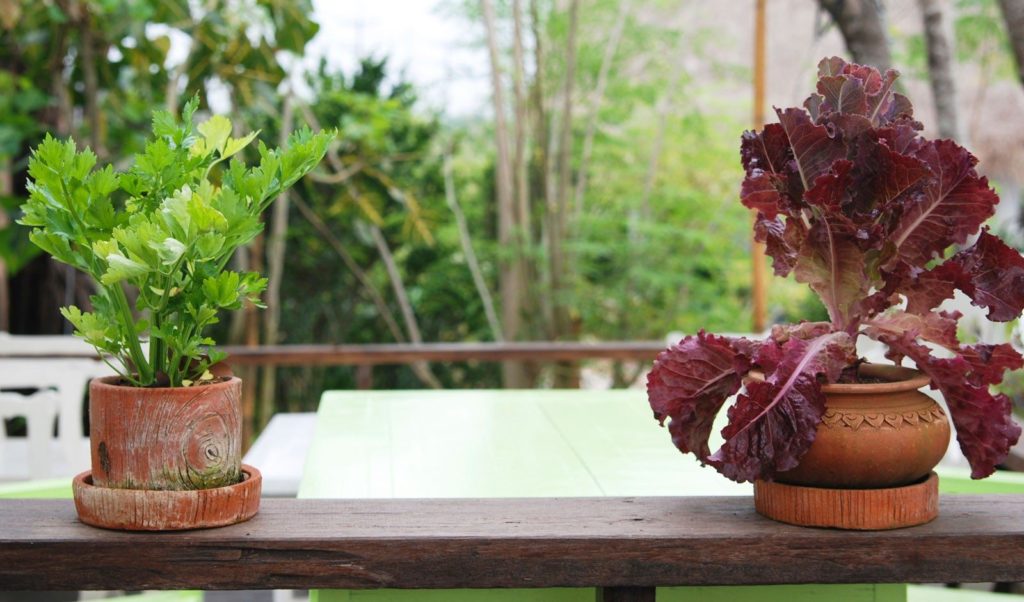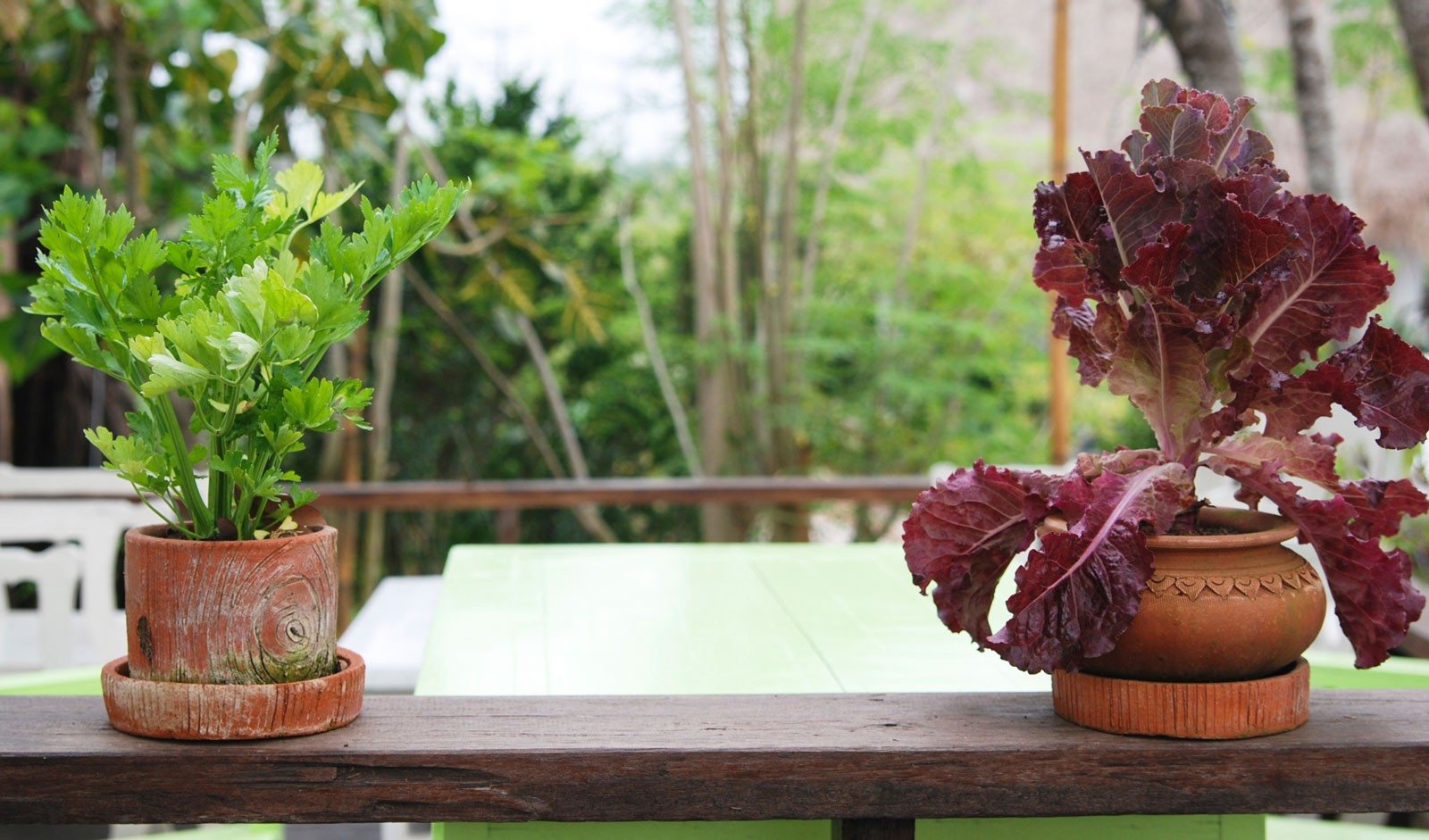
Many homes have a sunny window, sunrooms or patio where house plants can soak up the winter sun. Vegetable plants can grow as well as your potted plants if you give them a little extra light.
A south facing window is best if you have one. The sun tracks across the sky at a lower level during the winter and the daylight hours are shorter. If you have a sunny spot or a sunroom you may not need to add indoor lights.
The best spot to set up a growing area is where you get 5 to 6 hours of bright light a day and good air circulation. A temperature fluctuation between 45 and 70 degrees is best, so watch out for drafty areas.
If your location gets less than 6 hours of sun each day, you’ll need to set up some type of indoor grow lights. Regular shop lights can be used for this. They are less expensive than specialty grow lights, come in various lengths and are easy to find.
Indoor lights can be hung over your vegetable garden area or set up on supports — like bricks stacked along the sides. With supports, you can adjust the height easily as things grow. You want the lights to be 6-8 inches above your plants. If you plug the lights into a timer, you won’t have to remember to turn the lights on and off.
Choosing Vegetable Varieties
Good choices for an indoor vegetable garden are lettuce, spinach or chard. These cool weather plants grow with less light than tomatoes or cucumbers. You can grown these, but they take longer to grow and need extra attention. Fresh herbs are also great to grow and can be cut and used all winter.
Choose plant varieties that have shorter days to harvest. Vegetable varieties that are meant to grow well in containers and bush varieties are easiest to grow indoors. Winter vegetables, like lettuce and greens, are great because of their short days to harvest. Microgreens and baby greens are also excellent choices. They are harvested while young and only take a few weeks to harvest.
Containers and Grow Medium
Vegetables need at least 4 inches for root space, so any container with at least that depth, as long as it has good drainage, can be used. Several different growing mediums such as potting soil blends, gravel and vermiculite can be used.
If you use gravel or vermiculite, you need to water plants twice a day with a water/nutrient mixture to keep the medium moist for the plants. The water/nutrient mixture flows through the medium and drains out the bottom.
Potting soil holds the moisture for plants and is the more traditional growing method and is preferable for growing microgreens and salad mixes that will be harvested in the early stages of growth.
Mix compost with a good commercial potting soil to enrich the mix and add nutrients. You want your soil to drain well so the potted roots do not rot. Do not use garden soil for your indoor vegetable garden. The soil is too heavy and compacts when you use it in containers.
Maintaining Your Indoor Vegetable Garden
Overwatering is the most common cause of indoor plant death and underwatering is the next. Allow the soil to go slightly dry to the touch between watering. Actively growing plants will need fertilizer every 2 to 4 weeks. Time release fertilizer pellets release nutrients each time you water and last 6 to 8 weeks.
The best part of your indoor vegetable garden is harvesting. Keep your plants cut back and use them often. Your greens and herbs will re-grow and thicken up as you use them.
 Related Articles & Free Subscription
Related Articles & Free Subscription
A Quality Potting Mix Leads to Gardening Success
Bold and Beautiful Alliums for Every Garden






Comment here